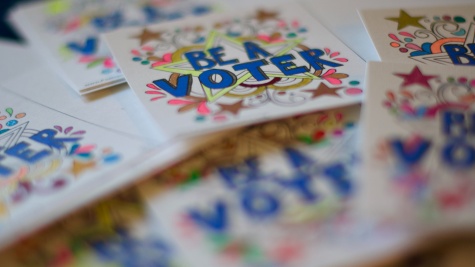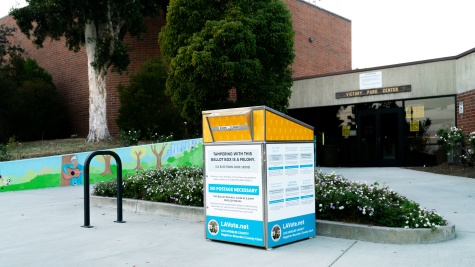Modeling Voting Service Times with Machine Logs
The MIT Election Data and Science Lab helps highlight new research and interesting ideas in election science, and is a proud co-sponsor of the Election Sciences, Reform, & Administration Conference (ESRA).
Jacob Jaffe, Charles Stewart III, and Jacob Coblentz recently presented a paper at the 2018 ESRA conference entitled, “Modeling Voting Service Times with Machine Logs.” Here, they summarize their analysis from that paper.
After the election in 2012, the long lines at polling places on Election Day were an issue highlighted by many, including then-President Barack Obama.
This focus led academics and election administrators on a search for ways to measure how long it takes voters to complete tasks associated with voting. Measuring these tasks, such as marking ballots and checking in, is the first step to improving our understanding of how polling places can operate more efficiently.
Challenges to estimating how long it takes to mark a ballot
There are many challenges to measuring how long it takes voters to cast a ballot; in general, these challenges stem from two factors. First, the time that individual voters take to mark a ballot varies considerably. If we want reliable measurements about how long it takes the average voter to mark a ballot, we need to time a lot of voters as they cast a ballot. Second, ballots vary from precinct-to-precinct. Therefore, to get an accurate assessment of ballot-marking times across different types of ballots, we need to observe voters voting on a wide variety of ballots.
Both of these factors raise the cost of getting accurate measurements of ballot-marking times.
A novel approach to estimating ballot-marking time
In this paper, we develop a new approach to estimating ballot-marking times that overcomes these challenges. We then use these estimates to study the ways in which ballot design, voter behavior, and voter demographics influence how long it takes voters to mark ballots.
South Carolina uses an electronic voting machine (termed a direct-recording electronic machine, or DRE) manufactured by Election Systems & Software (ES&S) called the iVotronic. Our method relies on the machine-log files that monitor and record the “events” that occur on the iVotronics on Election Day. An event can be when the machine is turned on, a memory card is inserted, or a vote is cast. Whenever such an event occurs, the machine’s log file records the exact time and date of the event.
Unfortunately, the iVotronic machine-log file only records the time when a ballot is cast, and not the time when the voter begins to mark the ballot. Before we began any analysis of the log files, then, we had to decide on a method that would allow us to measure the time each voter took to mark a ballot. We did this by looking specifically at log files from times when a polling place was most likely to be at full capacity.
If a voting machine is started up and begins to be used when a polling place is at full capacity — that is, if there is a line of voters waiting for machines, and all the machines are being used — then the time between successive ballot-casting time stamps on a machine will approximate how long it takes to mark a ballot. An important feature of our method helps figure out when machines are most likely being used to capacity, so that ballot-casting time stamps from those periods can be used to estimate ballot-marking times.
Prior research, confirmed by our own work, has suggested that voting machines are most likely to be used at full capacity early in the day. Therefore, one option we explore is measuring ballot-marking times between 7:15am and 7:30am, when polls opened. Another option we apply is identifying and measuring ballot-marking time on machines that were used a minimum number of times (four, in this case) in specific fifteen-minute periods. Both of these options diverge from previous analyses of high-capacity times, which have only used timing data from the period of time after the polls have closed, but voters are still standing in line to vote.
To help us understand how the design of a ballot influences marking times, we need to know what, exactly, is on every ballot. We can ascertain this using another file produced by the iVotronics: the “ballot image” or “cast-vote record” file (CVR). The CVR file records the candidate choices made by each voter — they are the ballots that are counted on election night. These ballots are randomly entered onto the CVRs, so that ballot secrecy is preserved. CVR files give us rich information about which candidates and offices appear on every ballot, and the behaviors of voters that might influence how long it takes to mark a ballot, such as whether they use the straight party option or “under-vote” particular races.
One final source of data is the precinct-level demographic information made available by the state of South Carolina. This includes the total number of voters, the number of voters over 65, and the number of non-white voters.
What influences ballot-marking times? Ballot design, voter behavior, and demographics
Overall, we were able to estimate the ballot-marking times from over 1,000 precincts in South Carolina in the 2016 election. Depending on the precise rules we use to select the data we use to estimate marking times, the average marking time statewide ranged from 2.8 to 3.5 minutes
We perform a number of multiple regressions to quantify the degree of association between ballot features, voter behavior, and demographics, on the one hand, and ballot-marking times, on the other. The length of the ballot certainly influences how long it takes voters to mark a ballot. We estimate that each additional office on a ballot increases the ballot-marking time between 1.3 and 1.7 seconds, and that each additional candidate increases the ballot-marking time between 0.2 and 1.2 seconds. Marking the straight-party choice reduces ballot-marking times by up to half a minute. Ballot-marking times are longer in precincts with more elderly and non-white voters, and shorter in precincts that have many voters per voting machine.
Even after controlling for ballot design, voter behavior, and demographics, there remains considerable variation across counties in how long it takes to mark ballots. This suggests the need for further research to understand how county-specific practices, such as poll worker training and precinct layout, influences ballot-marking times.
Measures such as the one we develop in this paper are important, because they offer election officials a way to measure service times in polling places unobtrusively. If measurements are taken automatically as voters count their ballots, officials will have a richer source of data for the management of the polls. Academics benefit from such measures, as well. With richer data about the behavior of voters as they cast ballots, it is possible for scholars to better understand how election administration, voter behavior, and demographics come together to influence polling place dynamics.




